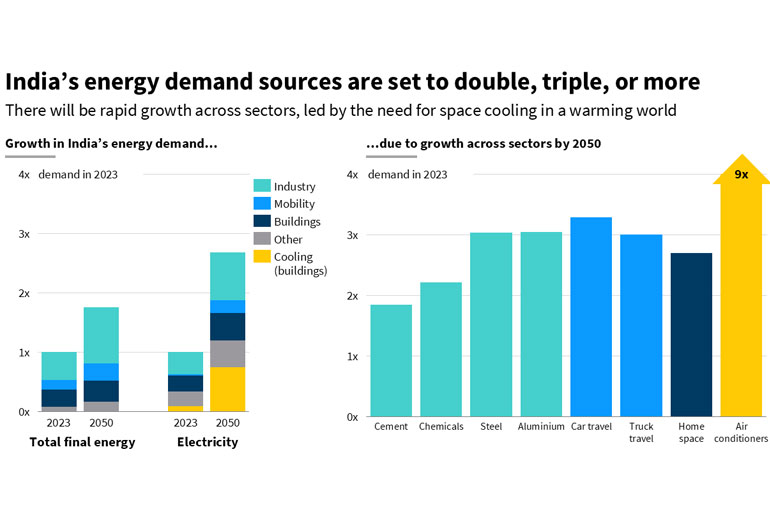Empowering India: The Clean Energy Growth Opportunity, a new report from RMI, demonstrates how India is using inexpensive, clean, and effective renewable energy to meet its rapidly rising electricity demand.
By 2050, India’s energy consumption may triple, particularly in light of the requirement for space cooling as the planet warms. This new set of studies from RMI shows how India is decreasing costs, creating employment, scaling up domestic manufacturing, and becoming more competitive by eschewing fossil fuels and reliance on imports in favor of clean technology to address the country’s expanding energy needs. India has achieved impressive speed, scale, and cost reductions in its transition to a sustainable energy system through innovation and legislation.
Key findings include:
- India is set to grow and build more than any other region — including nearly half the world’s growth in annual steel production. With 3x as much vehicle travel and 9x as many air conditioners, India’s electricity demand could triple by 2050.
- This growth is an unparalleled opportunity to build right the first time. Unlike in the United States or Europe, nearly all of India’s midcentury building stock has yet to be built. Growing efficiently and cleanly builds resiliency and creates a competitive advantage.
- Fossil fuels are expensive to import — costing 5% of the nation’s GDP. But renewable energy is readily available, and India is already reaching self-sufficiency in the manufacturing of solar modules, wind generators, and battery cells. India’s largest renewable energy project under construction is nearly 4 times the size of the biggest project in the United States or Europe.
- In recent months, electricity from new solar + storage has become cheaper than new coal, and new solar on its own has become cheaper than existing coal power plants.
- Despite the incredible opportunity, India receives only 4% of global clean energy investment. If the finance catches up, India’s transition could save more emissions by midcentury than Europe and North America combined — while charting the way for emerging economies around the world.



